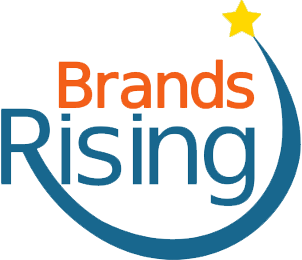Artificial Intelligence (AI) is integral to data-driven strategies, marketers with these skills will set themselves apart. While you may not be a data scientist you are likely working alongside them to mine, analyze and apply insights discerned from social media analytics to marketing strategy. Businesses of all types are in need of marketing communications leaders who understand the data and can apply the business intelligence to data-driven marketing communications strategy, optimizing techniques across paid, earned, earned, and shared engagement methods.
Artificial intelligence has become an integral part of our lives from voice, image and facial recognition to diagnostics, advancements in AI technologies are part of our ever day lives. Within marketing, AI provides a plethora of capabilities such as dynamic content development that matches search queries, marketing automation, social listening just to name a few. We’re witnessing a transformation traditional marketing communications disciplines in the era of artificial intelligence. I recently gave this presentation about the shift and what it means to the marketing profession.
New Marketing Communications roles
Data driven marketing skills are in high demand. Numerous job titles have been created that never before existed within the industry. For example, analytics manager, and data scientist, data visualization specialist, digital and social media strategist, blogger, search engine optimization specialist, content marketing strategist, influencer marketing manager, social customer care, and brand ambassador, are only a few. Within most organizational structures, roles such as these typically ladder up to the C-Suite; specifically, to the Chief Communication Officer, Chief Experience Officer, Chief Marketing Officer, or Chief Digital Officer. A quick glance at an organizational chart illustrates that no two companies share the same structure when it comes to staffing and aligning talent within these disciplines.
Given that emerging AI technologies are here to stay, the capabilities these provide are helping marketing communications practitioners make better informed decisions to become increasingly strategic, leveraging data-driven insights to develop incredibly sophisticated and engaging customer experiences. The presence of artificial intelligence within the broader industry presents massive opportunities to develop personalized content, offers, or present emotional triggers that inspire engaging topical conversions. Additionally, these capabilities can deliver measurable efficiency and effectiveness gains, for example by implementing chatbots within the customer service realm assist in sales, enhance effectiveness of campaigns, and ultimately drive improvements in expense to revenue ratios. A few benefits include:
- Utilizing Natural Language Processing to optimize content to match search queries, writing SEO optimized headlines
- Utilizing social listening and text and image analytics to better understand customer segments and preferences, identifying influencers and communities, prioritizing top influencers for engagement
- Enhance customer care through speech / voice recognition and serving up self help options like chatbots, while improving customer satisfaction
- AI provides advanced analytics to improve audience targeting, visual content development, content curation, product recommendations, marketing automation and customer relationship management
As organizations continue to invest heavily in harnessing insights from the social web using social listening and advanced analytics, an entirely new industry has been born comprised of emerging technologies rooted in natural language processing, semantic analysis, machine learning and artificial intelligence.

Artificial Intelligence (AI) teaches systems to perform tasks based on ML and NLP such as: speech recognition, decision-making, translation between languages, visual perception. Machine Learning (ML) Computers learn from pattern recognition. Semantic Analysis: Evaluation of tone, sentiment, and emotion. Natural Language Processing (NLP): Text analysis, summarization, extraction and retrieval.
These evolving technologies equip marketing communications practitioners with the ability to analyze and mine online conversations occurring across social networks, in nearly any language, around the globe. As practitioners, we must turn our attention to the power of data-driven decision making and embrace the vast opportunity it beholds.
I suggest checking out studies published by Converseon, a leading social intelligence digital consultancy, highlight that the appetite for applying social media data insights has increased within the broader industry. This expansion is creating a high level of demand for new data-driven skill sets, essential in applying data-driven strategies that drive business outcomes. Key factors in the report note “uses of social data expanding across the enterprise now include category/need state analysis, social CRM, audience analytics/segmentation, innovation, product development, brand tracking, customer journey/experience, marketing mix modeling, advocacy analysis, reputation management influencer identification, content/linguistic analysis, and more. Insights teams can apply social data to a wide range of needs, including brand tracking, post segmentation, market mixed modeling, trend forecasting and more for fast and actionable results. Sales teams can plumb social media for new leads.”
